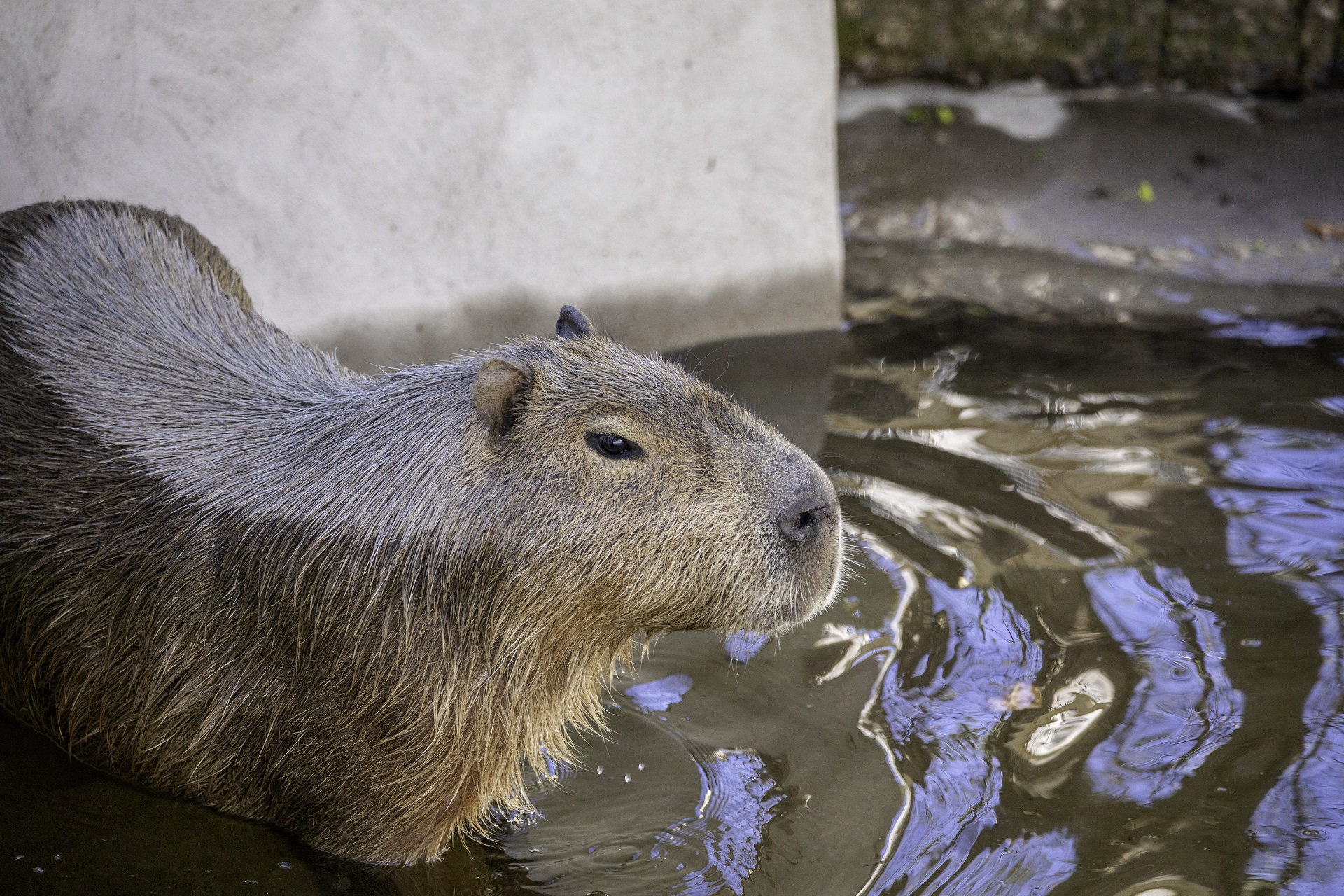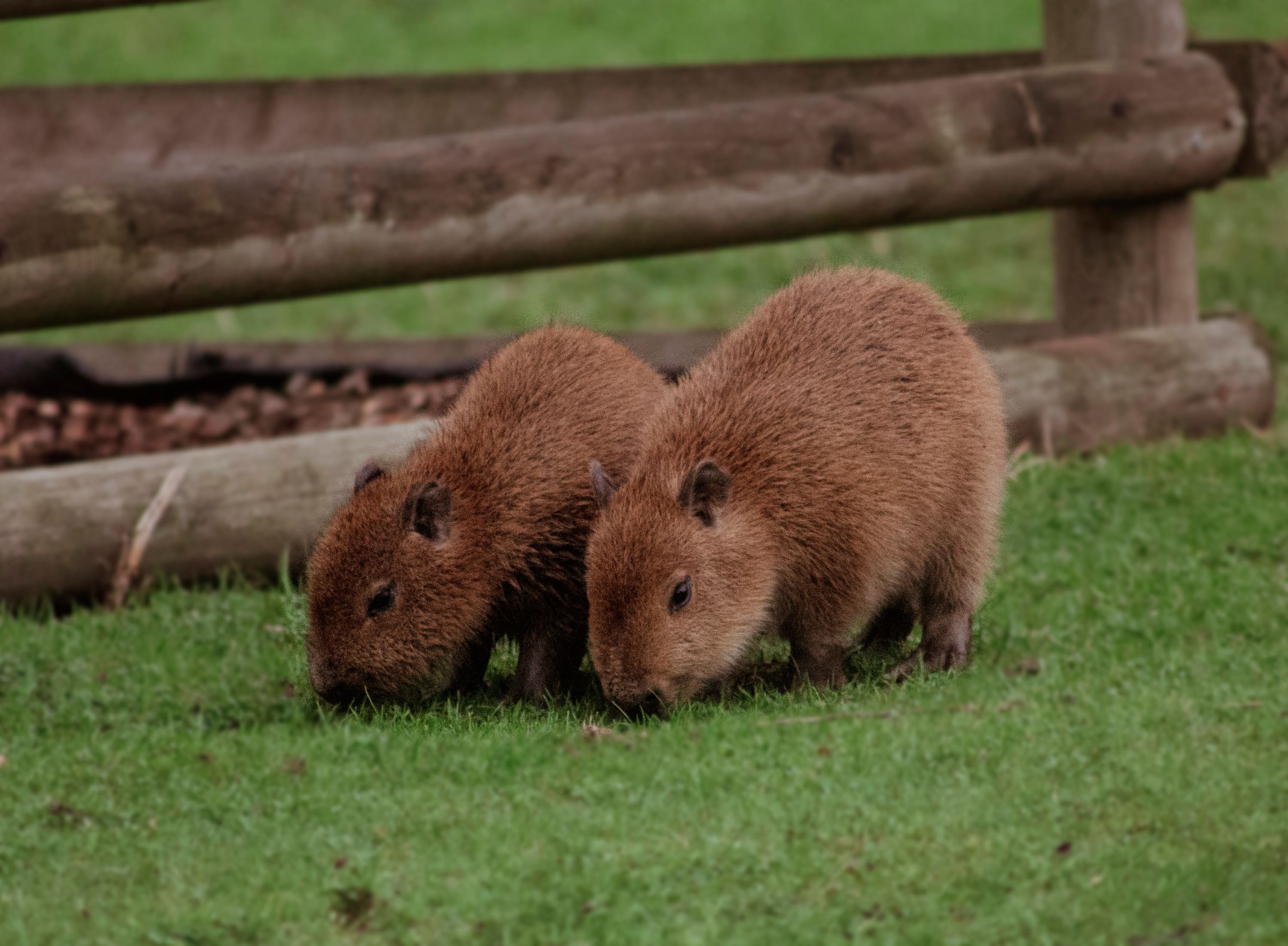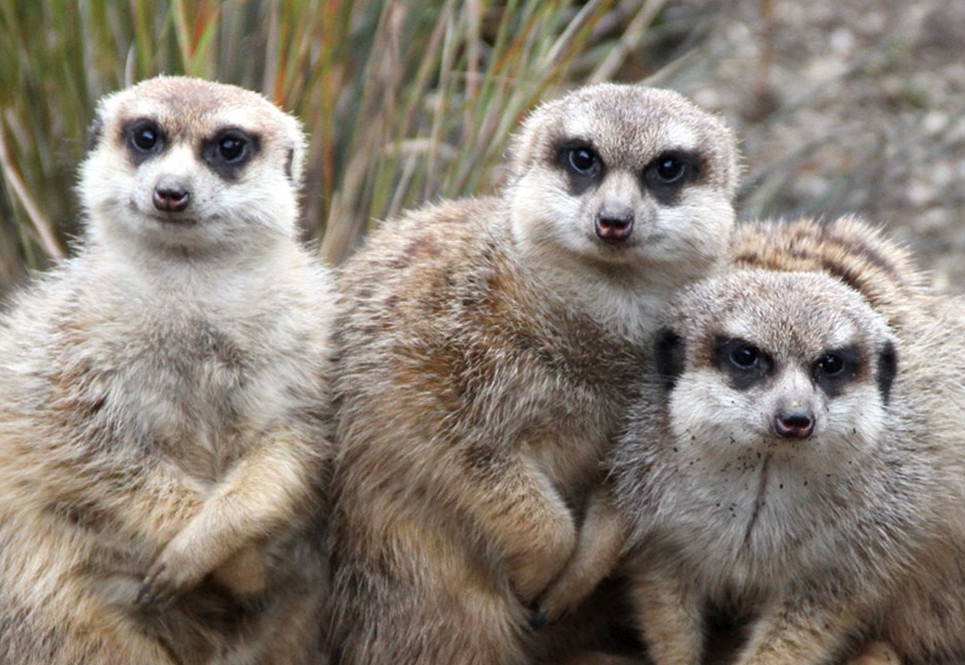Capybara
Hydrochoerus hydrochaeris
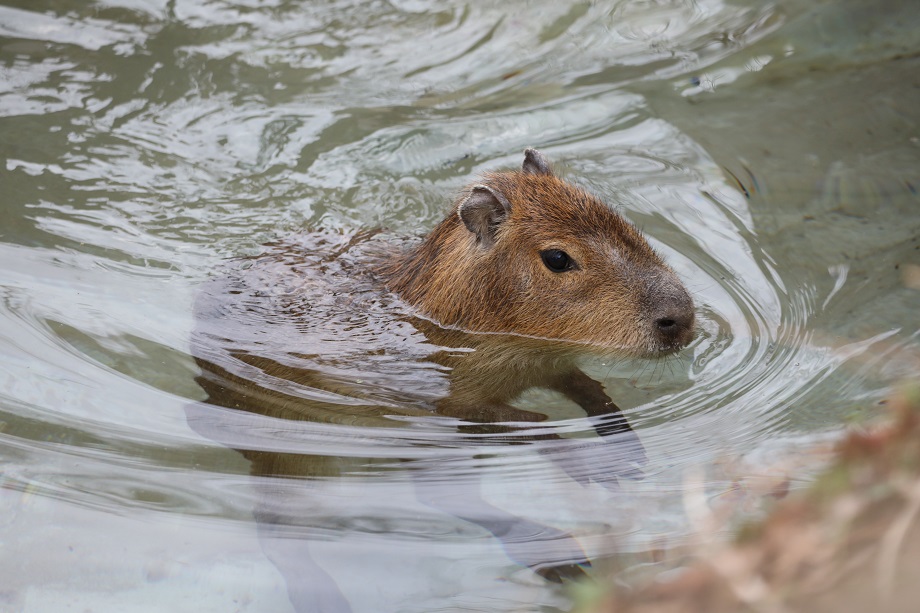
We have three capybaras here at the zoo, Rodney, Luna and Cali – you can spot them next to our rhino.
Despite being new, our capybaras are already showing the keepers their inquisitive little personalities.
Population
Stable
Diet
Herbivore
Habitat
Grasslands
Fact file
Capybara are the largest rodents in the world
Specially adapted for swimming, they have webbed feet and have their eyes, ears and nostrils positioned on top of their heads, so they can stay alert while in the water. They often submerge themselves to evade predators like jaguars, anacondas and caimans
Despite being small and stocky, capybaras can reach running speeds of up to 22 miles per hour
Latest capybara news
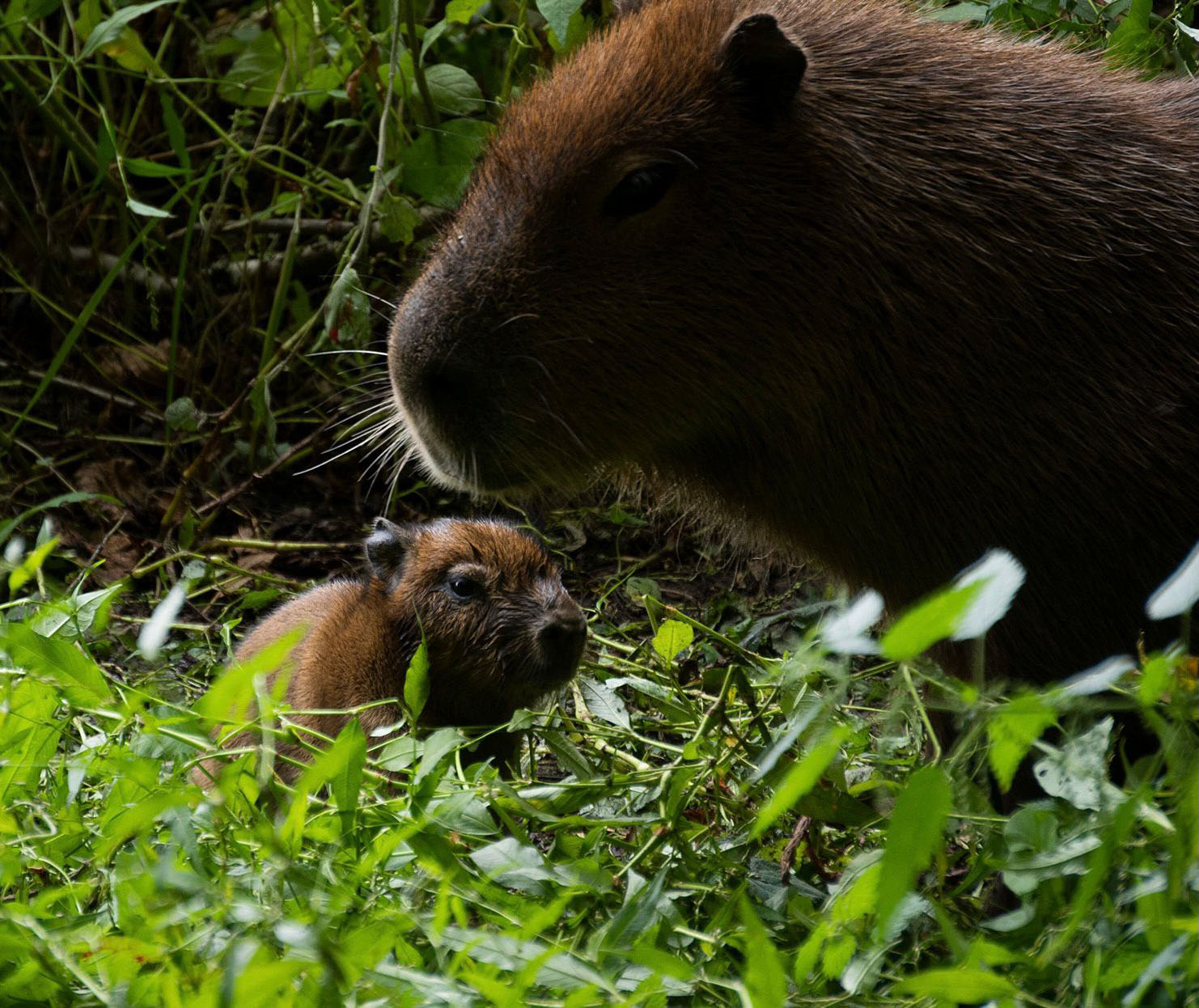
How we're helping
Like all the animals in our care, our capybaras are an amazing ambassador for their relatives in the wild and helps hundreds of thousands of people connect with nature every year. They encourage visitors to learn about the threats facing wildlife and the action they can take to help create a world where nature is protected, valued and loved.
As a wildlife conservation charity, we care for the animals here at the zoo and work to protect species at risk around the world. From providing expertise in genetics and veterinary health, to protecting wild places with local conservation partners, and even restoring threatened species to the wild, we are active where we are needed most.
Find out more about RZSS conservation
